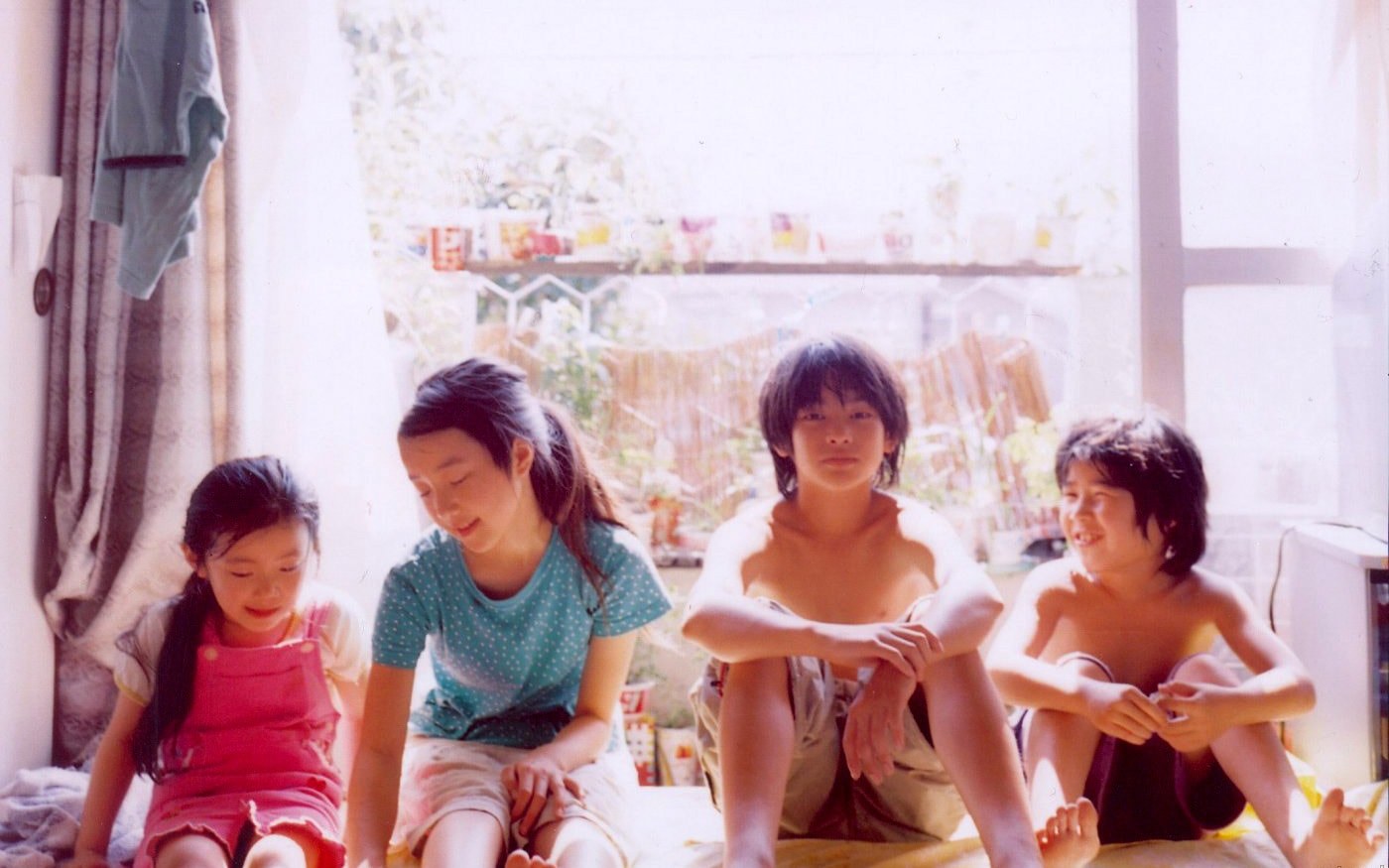Nobody Knows by Hirokazu Kore-eda (Review)

In his review of Café Lumière, Jeffrey Overstreet wrote that the more movies he watches, and the older he gets, the more he enjoys a particular sight onscreen — people who are thinking. I have to agree, it’s something that I’ve also come to appreciate more and more myself. Granted, it can be difficult sometimes, but when you can slow yourself down enough to enter a movie’s world, it can be a refreshing and moving experience.
This thought came to mind as I was watching Hirokazu Koreeda’s Nobody Knows. The story seems rife with possibilities for saccharine melodrama and heartstrings-tugging: four young children are abandoned by their selfish mother, and are forced to fend for themselves in a cramped apartment. Thankfully, Koreeda resists that urge for the most part. Instead, he eschews any drama altogether and instead just immerses us in the world of these children, who act, refreshingly, like children. (No Dakota Fanning-esque “wise and precocious beyond their years” nonsense here, thank you very much.)
At times, they seem blissfully unaware of anything going on. They play in the park, plant seeds in cups on the window sill, dutifully do the laundry, and eat noodles from the nearby convenience store, even as disconnection notices from the utility companies pile up on the table. But what do we expect for them to do?
The only one who seems really aware of their situation is 12-year-old Akira, who despite being big for his age, is really at a loss at what to do. Being 12 years old, he’s unable to really fend for himself. He can’t make his case to the adults, and even his attempts at expressing his dissatisfaction to his mother are small and trite at best. Which, in many ways, feels far more honest and realistic to me.
The film does meander at times — 30 minutes or so could probably have been trimmed with little to no harm — but the silence and space in the film ultimately proves captivating, if you’re patient and observant enough, that is. Characters come and go, such as the boys that Akira strikes up a temporary friendship with. That particular subplot doesn’t even really count as a subplot, but it makes perfect sense for the character — after all, what pre-teen boy wouldn’t love to play video games all day in a house without parents.
And the silence, such blessed silence. Again, in accord with Overstreet’s sentiment, I’m finding more and more appreciation of silence in movies. Or not silence per se, but the absence of dialog and exposition. When Akira shifts uncomfortably in his seat while in his mother’s presence, it speaks far more to his disgust at her antics than anything he could say. Same goes for the twist of his mouth and the glint in his eyes when he finally tracks her down by phone and discovers what she’s been doing in her absence.
Despite the central premise — which, sadly, was inspired by a true story — Nobody Knows remains surprisingly unsentimental. Or rather, it doesn’t force the viewer to any false feelings, but rather allows the viewer to develop their own emotional responses. However, a certain sense of foreboding does linger over the film and inevitably, tragedy does strike in the final half-hour or so. There again, though, I was thankful for the film’s silence.
As Akira and Saki, a junior high girl that has befriended the kids, wrestle with what has happened, they say nothing. All that’s communicated is done so with posture, shaking hands, and finally, a comforting touch. It’s a powerful scene, and the lack of dialog and exposition, and just the roar of airplanes flying overhead, imbues the scene with an emotional devastation and loss that it would never have otherwise. So much so, in fact, that when the film’s closing song — the film’s only truly sappy element — begins, it feels a bit jarring, the one artificial moment in the entire movie.
And then there’s the film’s ending, which is nothing if not ambiguous. But again, the lack of desire to tie up loose ends and provide the viewer with a sense of absolute closure feels far more realistic and honest to me. The ending is bittersweet to be sure, and yet the final shot of the children walking down the street, together with Saki beside them, contains within it a bright bit of hope. Life goes on, sorrow has come and gone, and they’re together. It’s a little thing, but perhaps it means more because it’s so fragile and tenuous.